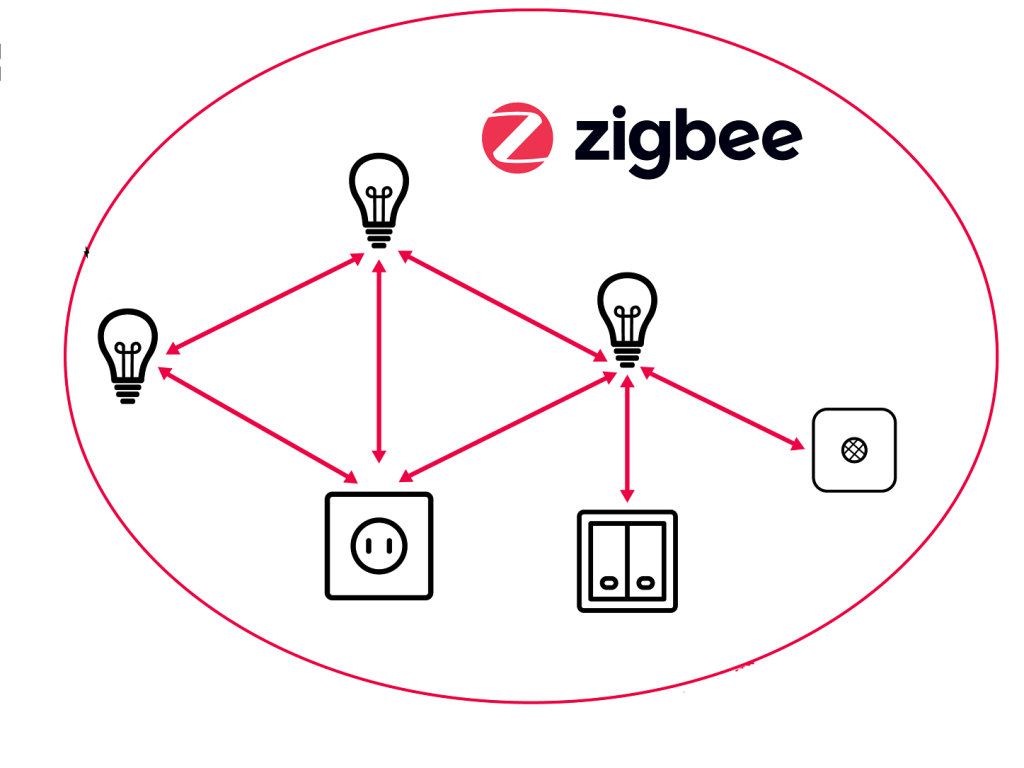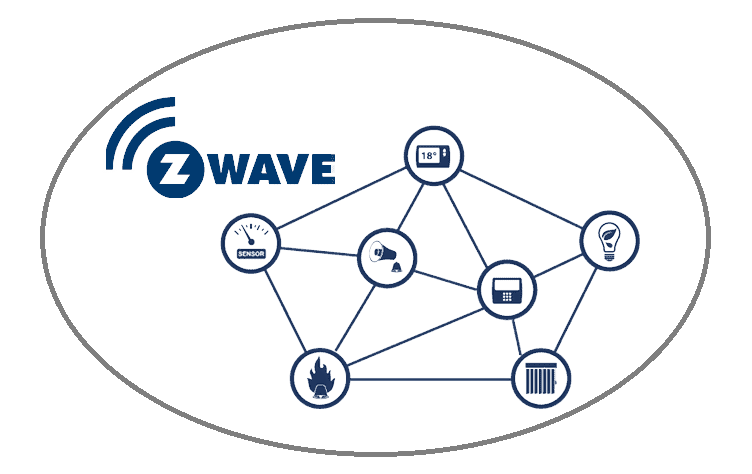When it comes to IOT and Smart Home Automation, Zigbee and Z Wave are two of the best choices around. Most users are stuck when it comes to choosing between them. Fortunately, we are here to help you out. In this guide, we will be highlighting their similarities and differences and help you to make a pick.
Outline
ToggleZigbee
Zigbee is a wireless technology that acts as an alternative to Wi-Fi and Bluetooth. Zigbee helps in home automation and monitoring and can fulfill in making your house ‘smart’. Zigbee supports Mesh network, in which a central hub is connected to multiple devices. The data is transmitted from the hub to the devices, and from one adjacent device to another.
This allows for a better range as compared to Wi-Fi and Bluetooth. Zigbee operates on frequencies like 2.4 GHz, 915 MHz, and 868MHz. The 2.4GHz frequency is also used by Wi-Fi devices so you might run into a bit of interference trouble there. Theoretically, Zigbee can connect up to 65000 devices but in real life, this number would be much lower.
Pros
- Is faster
- Can connect more devices.
- Cheaper
- No hop limitation between devices.
Cons
- Requires more power
- Could interfere with Wi-Fi devices
Z Wave
Z Wave was developed back in 2001 as an easier alternative to Zigbee. It also uses a Mesh Network and makes use of Radio Waves for communication between the devices. Z Wave might not be as flexible as Zigbee as it supports only a total of 232 devices. Moreover, only 4 hops are possible between different devices while Zigbee has no such limit. The operating frequency is 800-900 MHz and due to this frequency there won’t be any interference. This is one of its key selling points.
Pros
- Requires less power
- No interference
- User-friendly
- Higher range than Zigbee.
Cons
- Is slower
- More expensive than Zigbee
Comparison Table
| Zigbee | Z Wave |
| 250 kb/s Data Rate | 40 kb/s |
| Supports 65000 devices | Support for 232 nodes |
| 20 Meter range | 30-65 meter range |
| 2.4 GHZ frequency | 800-900 MHz frequency |
| Difficult to set up | User-friendly |
| 15 mW power consumption | 1 mW power consumption |
| GFSK modulation | BPSK and OQPSK modulation |
Comparison Overview
1. Frequency
The frequency determines the kind of device that can be added to the network. Zigbee uses a frequency of 2.4 GHz or 915 MHz while ZWave uses a lower frequency. Therefore, a Zigbee device cannot interact with a Z Wave network and vice-versa. Moreover, due to the frequency used by Zigbee, there is a possibility that Wi-Fi devices might cause interference.
2. Speed
If speed is the most important factor, then Zigbee ought to be your choice as Z Wave is way slower. Zigbee uses a higher frequency and thus has a faster data transfer rate. However, the high speed also comes with more power consumption and you might have to change the batteries often. For home automation purposes, going with the faster option might be smart. For example, switching off the pump and opening the gate are tasks that need to be done instantly and need a faster connection.
3. Smart Home Interoperability
Z-Wave has a very good reputation when it comes to interoperability. All the Z Wave devices work well with every Z Wave controller. Therefore, if the device is Z Wave certified, there is no issue with compatibility.
With Zigbee, things are a bit more tricky. Zigbee has two different certifications-one for software and another for hardware. Therefore a hardware-certified product might not be compatible with a software-certified device. Here, the keyword is ‘might.’ It could also work flawlessly as well. If interoperability is a big deal, Z Wave is the better choice.
4. Compatibility
There are in excess of 3000 Z Wave products. Zigbee also has a similar number. However, all the Zigbee devices don’t work together. Only devices that use the same Zigbee version are compatible with each other.
5. Connectivity
Z Wave can support up to 232 devices which is more than enough for practical purposes. However, there is a limit of 4 hops from one device to another. Zigbee on the other hand supports more than 65000 devices and supports an unlimited number of hops.
6. The Working
Normally, smart devices ought to be connected to the internet for communication. In the case of Zigbee and Z Wave, mesh networking is used. A signal originates in the HUB and is passed onto different devices. A device can also pass information to another device. As a result, they are quite versatile and have a higher range than Wi-Fi networks.
7. Are they Safe?
You don’t need to worry about safety as both these kinds of devices are quite secure. The signal is encrypted and hackers would find it very difficult to steal information. Even if someone intercepts the signal, they would not be able to make use of the information.
8. Choosing Zigbee
Zigbee offers more connected devices and is a much more versatile option. Also, it has a higher data transfer rate and for users who find speed a deal breaker, this is an important choice. Also, it is incredibly popular amongst OEMs.
9. Choosing Z Wave
Z-Wave has a much higher range compared to Zigbee and also due to the frequency does not experience any interference from other wireless signals. It is less power hungry and you need not change the batteries regularly. Also, another key aspect is interoperability.
Final Words
We hope you enjoyed this article emphasizing the differences between Zigbee and Z Wave. Both of them are phenomenal technologies and there are plenty of compelling reasons to choose for either of them. For any queries regarding the content, do write to us.



